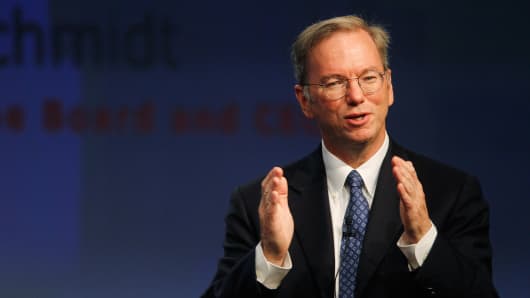Two of the heaviest hitters from different parts of the innovation economy — Google Chairman Eric Schmidt and Twitter CEO Dick Costolo — spoke about the power of technology, education and innovation as part of the New York Times' Dealbook conference on Wednesday.
Google's Schmidt weighed in on the biggest issues facing Silicon Valley — and the U.S. economy. The interview, by the Times' Quentin Hardy, drew out Schmidt's greatest concerns and best solutions
Schmidt said the U.S. economy faces three big problems: globalization ("China won't let me raise my prices"), automation, and demographic problems (an insufficient number of young people to fund old people's retirement).
"What I would like is for political leaders to solve all three at once," Schmidt said. "I would solve all these problems. I would invest more in education."




